– Today we are pleased to introduce Jennifer Van Haaften as part of the Wisconsin Historical Museum’s History Sandwiched In lecture series. The opinions expressed today are those of the presenter and are not necessarily those of the Wisconsin Historical Society or the museum’s employees. As an elementary student, Jennifer Van Haaften’s grandmother gave her a copy of the book “On the Banks of Plum Creek,” by Laura Ingalls Wilder. That book sparked a love of history and the career she has today. In college, she realized she could make money demonstrating historic life at living history farms in Des Moines, Iowa. After earning her bachelor’s degree in history at the University of Northern Iowa, her master’s in history at the University of Manchester, and her master’s in historical administration at Eastern Illinois University, she continued to work in museums. For 10 years she was Associate Director of Historical Programs and Resources at Old World Wisconsin. There, among other projects, she directed the annual month-long World of Little House event, giving every visitor a chance to live like Laura. Since 2015, she has been Assistant Director of the Wisconsin Veterans Museum. And for all she has accomplished, that day she became a Laura Ingalls Wilder fan has come full circle with her article about Laura Ingalls Wilder’s family ties in Wisconsin titled, “Re-Examining the American Pioneer Spirit: The Extended Family of Laura Ingalls Wilder,” published in the Wisconsin Magazine of History. So if you could all join me in welcoming Jennifer Van Haaften.
[applause]
– Good afternoon. Thank you. Forgive me, I’m recovering from a cold, so I may have pause every so often. I’m curious, how many of you have read Laura Ingalls Wilder books? Any certain part of it? Excellent. So this looks like an audience that would be familiar, so that’s good to know. I’m a Wilder fan myself, obviously. And, like we said, in elementary school, probably about third, fourth grade is when I was introduced to the books. I worked at Old World Wisconsin from 2005 until 2015. And so we did use the books pretty tightly. A lot of quotes from it. We did exact activities from the books when we did our Laura Ingalls Wilder activity days that we had. So I’ve always been curious about Charles and Caroline, especially when we moved to Wisconsin, and I discovered that Charles and Caroline’s, their own families had moved to Concord, Wisconsin, which is just up the road from where my own family lives. We live in Fort Atkinson. So in Jefferson County. So I was a little bit curious. I thought, oh, that’s kind of neat. And then, you know, working at Old World, I was connected with the Wisconsin Historical Society information, and the archives had put out the fact that they had digitized some of the letters from Laura Ingalls Wilder’s family, including one that had been written by her mother, Caroline. And so I was really excited because I was like cool, I can look this up, look at it online. It’s still there online, so you can look that up yourself as well on Wisconsin Historical Society’s website.
So it was really neat that they were able to digitize that collection. It’s not everything in that collection, and that particular collection resides at one of the archives regional centers at UW-Stout. And it’s one whole folder. And so that was really cool. I went up there and had a chance to look at the folder full of the letters and some other information that they had. But what really kicked off my curiosity to really push forward with my research on this was the publication of the book “Pioneer Girl,” which was the annotated bibliography. And that was published by the South Dakota Historical Society. Pamela Hill Smith was the one that heavily annotated it, and she had done a lot of research on the characters that are mentioned in the manuscript that was the precursor to all the books that we know today. So what I’m going to talk about, though, is the summary of my research for my article because that really focuses on Charles and Caroline and Laura growing up, her “Pioneer Girl” book. And I thought, well, what were they doing in Wisconsin before they took off for locations west? So that’s what we will look at today.
So Charles Ingalls family. Fans may be aware of Laura Ingalls Wilder’s origins, her parents’ origins. They’re what historians like to call, use the terminology, Yankee. And basically what that means is that their families moved over to the United States in the 1600s and the 1700s, most likely, from parts of the United Kingdom. So several different parts, but usually England, usually Scotland, Wales, those sorts of places. So they moved over and they all settled in New England. So those types of people come from New England states, and they will, eventually you do see those particular types of people move west. And they’re a really big group that influences the way government is set up, especially in Midwestern states. Wisconsin is also part of that. So that’s just something that historians do talk about.
That’s kind of our shorthand for that. So Charles Ingalls’ family, his father, his parents, they were from the town of Cuba in New York, which is western New York. The 1850 census puts Lansford Ingalls, Lansford is Charles’ father, family in King County, Illinois. And one of the other things that I discovered is Lansford had a brother named James, and he also was living in King County, Illinois, at that time. So already we are seeing a pattern of a family member moves west and then another family member decides to join them in the west. And so you’re going to find that this is a theme that I discovered in looking at the Ingalls family. So Charles actually grew up in Illinois for most of his life, pretty formative years from age nine to 19. And then, in 1860 census, that’s where we located the Lansford Ingalls family in Concord, Wisconsin. I haven’t had a chance to pin down exactly when they made that move. And there are also some situations around the way Lansford moves about that kind of makes it difficult to figure out when exactly he moves.
We’ll talk about that in a little bit. So Caroline Quiner’s family, her parents were married in Connecticut. Many of you may be aware that they’ve talked about Caroline possibly being the first European descent baby born in Brookfield, Wisconsin. She was born in Wisconsin. Her father died in a boat wreck on Lake Michigan. And, actually, that particular boat wreck story is recounted on a piece of paper. It might have possibly been one of Laura Ingalls Wilder’s aunts writing down what she knew about the story of what happened to their father. The family, the children were very young when he died. So to kind of medicate their situation, mother Charlotte was able to purchase land near Concord, Wisconsin, and start her own farm. She eventually met and married a Frederick Holbrook, and they continued to live in Concord, combining their farmland together, farming that all together.
And they had one more daughter who happened to have also married and is buried in Fort Atkinson. So that was kind of fun for me to find that out, too. So that kind of gives you a sense of where they were a little bit in Jefferson County. So in “Little House in the Big Woods,” you may recall that it mentions a Peter and Eliza Ingalls and a Henry and a Polly Quiner. And Henry and Eliza are Caroline’s siblings and Peter and Polly are Charles siblings. So there are three sets of siblings that married each other out of these two families that met each other somehow in Concord. The letters in the WHS collections that I mentioned, they were received and kept by Caroline’s oldest sister Martha that I had talked about earlier. So her oldest sister, she had married a Charles Carpenter. So a little bit about the letters is that her descendants had donated letters to the Wisconsin Historical Society. This was back in the 1970s.
And I’m– Well, no, I’m not assuming. There is a letter that is with this collection where the descendant says we are donating these letters because it recounts some Civil War stories and soldier stories in them and we think they’re important that they be at the Wisconsin Historical Society. What they didn’t know or think about or realize was that some of the other letters kind of became famous in their own right because they were related to Laura Ingalls Wilder. So the letters tell a little bit more about how much of the Ingalls family kind of finally makes the move to Pepin and Pierce Counties, which is in the western part of the state and it’s pretty northwestern. So that’s what we, that’s what the Big Woods is mentioning, is that area of the state is what the Big Woods are about. So the Ingalls family moved to Pepin and Pierce Counties. So Martha is already in Pepin County with her husband Charles, and they have established themselves on a small farm there. And so the letters that are in the collection, this is about the time that they’re coming to her while she’s living in Pepin County. So it kind of shows you that there is a family member already in the north of Wisconsin who’s sort of a draw. There’s a reason for them to want to move to that particular area of Wisconsin.
The letter that is written by Caroline to her sister Martha in 1861, it talks about Charles’ father, Lansford Ingalls, and she specifically says, “Father Ingalls could not save the farm even though they tried very hard.” Now, there’s no indication about what exactly that means. Assumption is perhaps they could not pay off debt in some way, shape, or form, and that they had to get off the farm, sell the farm, leave the farm for some reason. They were not able to make it work. And then she also says in her letter that Peter and Eliza went with them up north. So this is after the 1860 census, which we discovered that the family is in Jefferson County. So it’s not very long after that that they are moving up north. So Concord is not holding them very well, not producing for them, not able to support their family. Something like that is going on. Obviously, when these letters are written, there are some before and after that we don’t have and we can’t see, but obviously the family knows what is happening for them.
We just can’t determine that. Charles still had some very younger siblings who were teens, George and Ruby, so they also went with Lansford’s family as well up north. So I also, using the census records, also figured out that Charles’ brother, who was younger than him, Lansford James, he was married himself. He had started a family. I believe he had like a toddler and a baby when we find him in the 1870 census in Rock Township in Pierce County. Not very far, his farmstead is not very far from Lansford’s because they’re only like a couple lines apart on the census, and when the census takers went around, they went from house to house in the neighborhood. So whichever ones were closest to each other is how they ended up in their order. So that’s how we know that James made the trip up north there. So obviously having family in a particular area is a draw for the rest of your family to maybe move into that area. They’re either there, they can tell you the land is good or I’m doing better here and maybe you want to come up here.
Or it may just be, I would really like to move closer to my family, I’m going to move up there and buy some land up there because we know it’s available for sale. In 1863, so a couple years after Caroline wrote that letter saying that Lansford Ingalls couldn’t save the farm, I have, I discovered Pepin County deed records that show Henry Quiner, Caroline’s brother, and Charles Ingalls. They bought– And actually their wives, all of their names are on these deeds– They bought property right next to each other in Pepin County. So, obviously, Martha being up there with Charles and then Lansford and Peter and Eliza moving up north and now Laura’s parents and her other aunt and uncle, they’re all moving up north in basically the same area. So, again, that was one of the things that really struck me is how they kept kind of following one after the other. So this is kind of where it led me to wonder about the pioneer legacy of the books. When you read the books, you know, you do understand kind of the sense of Charles Ingalls’ family going out on their own, setting up homesteads, homestead after homestead, trying to make a go of it. If it doesn’t work very well, well they’ve got another plan around the corner or something like that. Somehow things always seemed to work out. And true to the book’s storyline, Charles probably did have the widest range of wanderlust because the 1870 census does show him in Kansas, his family in Kansas, while the rest of the Ingalls-Quiner family that I mentioned, Henry and Peter and Eliza and James and Lansford, all those families were either in Pierce and Pepin Counties up there.
So obviously Charles thought he would try his luck a little further south and west. And so we also know a little bit from the books that they were probably on the land illegally. And so when they were told that they needed to move off the land, it also happened to be that the gentleman that had bought or maybe was renting to own. It’s not exactly entirely clear, especially from the deed records that I was trying to read and how exactly loans went out, how the payments were going. Gustaf, Gustaf’s son, which I love that, so that shows you that the Norwegian neighbors are around there, and those are in the stories too, if you recall that Laura encountered a lot of neighbors that were of Scandinavian descent throughout her stories. He couldn’t pay for the property that he had brought off of Charles Ingalls, so the timing worked out for Charles and he could move back to his property up north in the Big Woods. And so they did do that. They only stayed until 1874. And then Charles, again I don’t know if it’s his wanderlust or if another family member’s wanderlust, but Charles and Caroline did not leave Pepin alone. They headed out and they moved out with Peter and Eliza, both of them.
It’s not the indication that we’re given the beginning of “On the Banks of Plum Creek” is just Charles Ingalls’ family crossing what they call Pepin Lake, which is just a wider part of the Mississippi River at that point, before the ice cracks, which they did do but they did it with Peter and Eliza. So that shows you how the original manuscript, “Pioneer Girl,” does talk about leaving with Peter and Eliza. However, by the time it made it into the– What are we on? The third book? “On the Banks of Plum Creek,” she had eliminated any mention of her extended family. It probably made for a cleaner story. If you write stories, if you’re telling stories, sometimes it helps to kind of simplify it down so it makes more sense. So you can understand if she’s writing it for what they’re considering a children’s audience at that time that they were doing some things that were a little bit different just to get it more interesting for kids. And having lots and lots of characters in a story can be really confusing, even for adult readers, so that’s something to keep in mind. So through the stories that we do know, the eight different books that she wrote, we’re given to believe that the Charles Ingalls family was on its own for much of its pioneering life. This is the part of the books– When you hear people talk about Laura Ingalls Wilder’s books being fictionalized, that’s really kind of what they mean. And I don’t know– I tend to dispute that it’s entirely fictionalized.
I think you have to look at the books as a whole and Laura as a writer, which the “Pioneer Girl” book does a really good job of talking about Laura’s relationship with her daughter, who was a writer, and how she learned the writing craft from her and then came into her own. Her daughter did a lot with some of the early books, but it seems that later on Laura kind of took up the rest of her books and wanted to make them a little more true to life. So some of the fictionalization you get, like the timeline got altered and things like that– That’s a lot of it due to Rose Wilder Lane doing her version of how she thinks stories should be told. And, actually, it really wasn’t a bad idea because she did get a children’s publisher to actually pick up the first book. And then, poor Laura had to go back and kind of use what her daughter had kind of rearranged for her and sort of fictionalized the beginning of her life. But further on, as Laura goes further into her stories that she writes, she kind of takes it on as her own, and there’s actually some letters that are mentioned in the “Pioneer Girl” book that are between Rose and Laura. And Laura is much more determined as she writes further down the series to put in more factual information about the specifics of her life. Now, she doesn’t do it entirely. There’s a lot of bits that she leaves out. But, again, when you are writing a story, you want to make sure that you have a beginning and an end, you’ve got protagonists, you’ve got main characters, you’ve got the side characters.
You’ve got to weave it into a story that makes sense to your readers. So it’s kind of interesting to think about this independent pioneer legacy. So the letters that I read indicate that the family was very, very connected, even up through the early 1900s. You can even read some stories about Laura writing her aunts to try to get more information about what happened to her father, what happened to her mother, how did they make these decisions, how did they come about. So that’s, you know, that’s rather interesting to see how they did that. One of my favorite ones that I found that I would like to share with you was from mother Charlotte. Holbrook was the last name by that point, and she’s writing Martha in– I believe this was 1875. So, right around when the Ingalls had moved into Minnesota. And she says, she writes, “Dear children, what is the trouble that you don’t write,” it’s hard to read. “Is it such hard times up there that you cannot find time or paper? If I knew, I would send you some, but I could not find but a half a sheet this morning. You don’t know how anxious I am to hear from you. If you,” let’s see, “If you did, you would write.”
So, sounds a little bit like how mom says, “Why don’t you call me more often?” [laughter] And I kind of really love that because it is exactly like that. So that’s also in the collections up there. But it shows that people want connection in some way. And in the 19th century, that was using your letters and wanting to hear it pretty frequently. And if they’re not– If you’re mother’s not hearing from you, she’s going to write you and kind of admonish you for not finding that piece of paper to write. So, you know, the choices that the Ingalls family made when they were moving, it often, especially early on here, involved moving where other Ingalls family and Quiner family members moved to. And so, even as they moved further west into Minnesota, Charles stuck with Eliza and Peter. The “Pioneer Girl” annotated bibliography does, or excuse me, autobiography, that does mention the fact that they move into Minnesota quite a ways, and then they sort of leave Peter and Eliza at one location, then Charles says, okay, I’m going to keep moving.
So that’s still indicative of Charles’ wanderlust and that he wants to keep on moving, keep on trying out new things. It might also be indicative of the fact that maybe he wasn’t a great businessman or a great farmer or maybe just had a lot of bad luck in his farming and that kind of thing. But, when you’re a child in that family, you’re not really going to know what’s going on in your parents’ heads and how those things are going. So it’s a little bit hard for Laura to understand, and she didn’t start writing her books until after her parents died, which is really what kicked her off to wanting to write these stories because her father used to be a really good storyteller and she didn’t want to lose those, that was her motivation. So the finished children’s books do give us a sense of independent pioneers. And if we think about at the time that Laura was writing her children’s books, it was during the Great Depression, and if you think about the books, it really gives people hope, because probably in every single book Pa and Ma have some kind of, some tragedy or something that kind of overwhelms them. They have got to figure out a way to get around it. So, the Ingalls family hits hard times, but, you know, everything continues to work out eventually for them. So I think that was a message that the books also were kind of sharing, is that Laura had probably that sense in the back of her head. That there are hard times that happen but there are always ways to get through it.
And if you’ve got family, which is what I feel like the books say, “If you’ve got family, you can get through it.” And I think maybe discovering that the family is so connected, the adults are so connected, that that kind of makes her life a little bit richer. That we know that they weren’t just a single family concurring everything out on the prairie, but they had other family members that were there to have their backs if they needed to. In some of the later books, “On the Banks of Plum Creek” and “By the Shores of Silver Lake,” we do read about Charles going back east. And back east is actually probably where Peter and Eliza are in Minnesota, and I am betting he went back and worked on Peter’s farm to make that extra cash that they needed. He knew somebody back east. He used that to his advantage to try to help advance his family. And I am happy to take questions.
[applause]
Search University Place Episodes
Related Stories from PBS Wisconsin's Blog

Donate to sign up. Activate and sign in to Passport. It's that easy to help PBS Wisconsin serve your community through media that educates, inspires, and entertains.
Make your membership gift today
Only for new users: Activate Passport using your code or email address
Already a member?
Look up my account
Need some help? Go to FAQ or visit PBS Passport Help
Need help accessing PBS Wisconsin anywhere?

Online Access | Platform & Device Access | Cable or Satellite Access | Over-The-Air Access
Visit Access Guide
Need help accessing PBS Wisconsin anywhere?

Visit Our
Live TV Access Guide
Online AccessPlatform & Device Access
Cable or Satellite Access
Over-The-Air Access
Visit Access Guide
 Passport
Passport





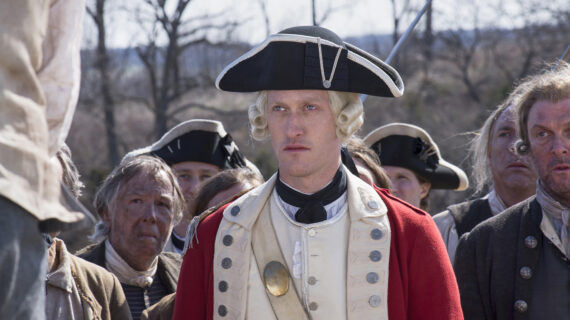
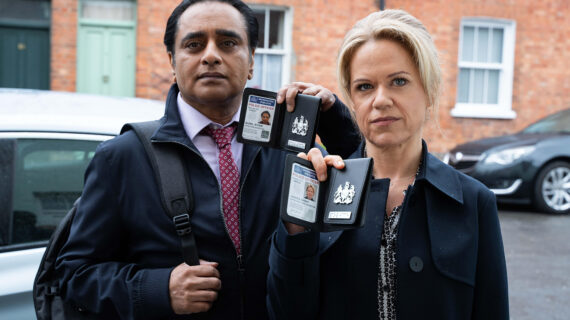
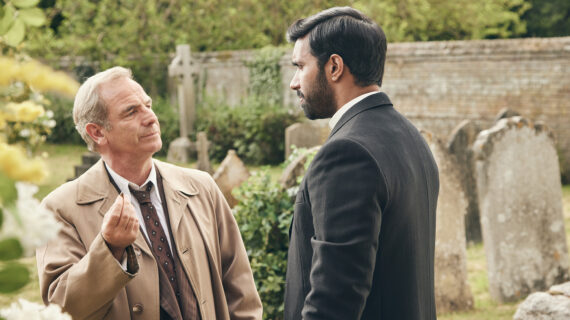
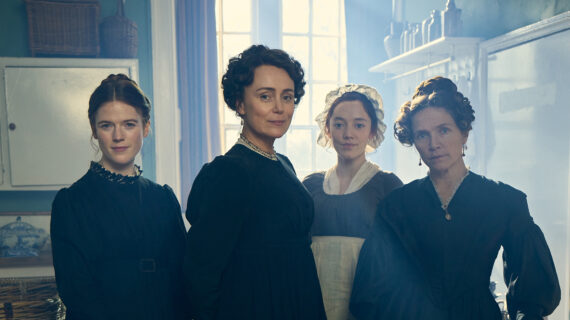

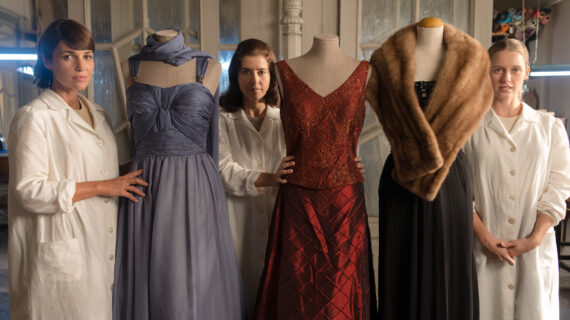
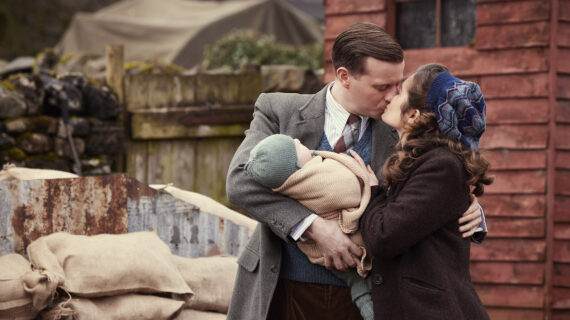

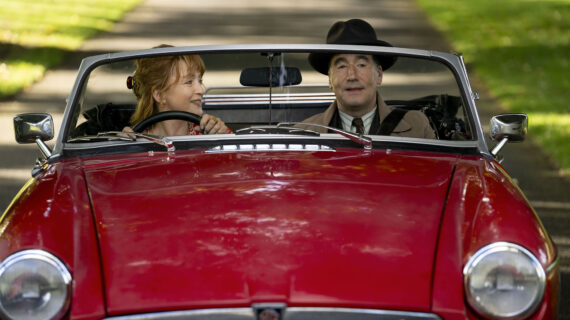

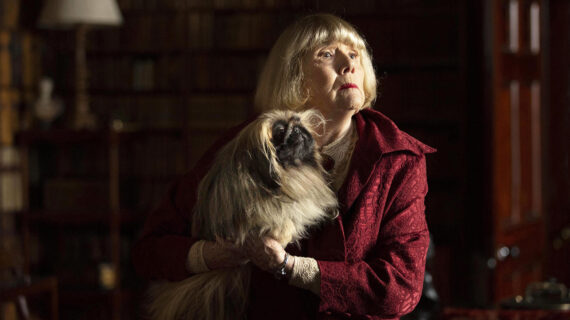

Follow Us